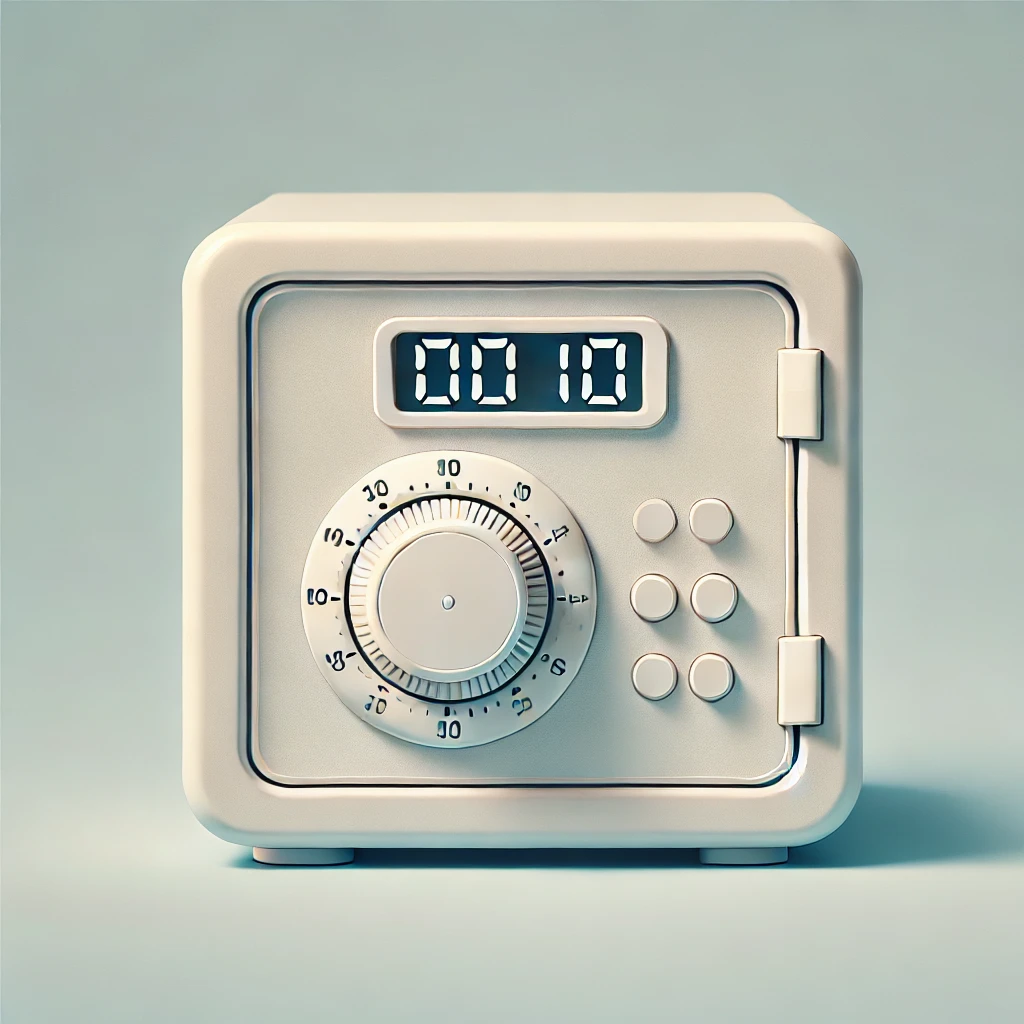Behavioral Change Needs More Than Willpower
Changing behavioral patterns is one of the hardest challenges when managing addiction. While willpower is often celebrated as the key to success, relying on it alone is rarely effective. This is because addiction is deeply tied to impulsive urges, which often overpower rational thinking. To truly change, we need tools that help us manage these impulses and create a structure for success.
The Concept of Timed Locking
The timed lockbox offers a simple yet powerful solution. This tool allows individuals to lock away addictive substances—like cannabis, cigarettes, or snacks—for predetermined periods. By doing so, the user makes a conscious decision to delay consumption and effectively neutralizes the impulsive urge to use the substance in the moment.
This approach creates a clear separation between decision-making and consumption. Instead of relying on sheer willpower to resist the urge, the user removes immediate access, creating both a physical and psychological barrier to impulsive behavior.
How the Lockbox Strengthens Self-Control
The lockbox isn’t just about denying access to the addictive substance—it fundamentally changes the way the brain interacts with addiction. Here’s how it works:
- Psychological Barrier: The locked substance feels less accessible and, therefore, less appealing. The extra effort required to access it gives the user time to rethink their decision and reduces the substance’s attractiveness.
- Reinforcing New Habits: Each time the substance is locked away, even for short periods, the user builds a habit of not consuming it during that time. Over time, this habit becomes ingrained, making non-consumption feel natural.
- Weakening Impulses: Repeatedly delaying gratification trains the brain to resist impulsive urges. Each successful delay strengthens the user’s sense of control and diminishes the impulsive patterns associated with addiction.

Achieving Full Control in 3 Months
By setting realistic goals and sticking to a gradual reduction plan, users can achieve significant progress within just 3 months. For example:
- Begin by locking the substance away for a few hours each day.
- Gradually increase the locked periods, moving from daily use to every other day, then to once or twice a week.
With consistent use of the lockbox, individuals can learn to manage their consumption without relying on the substance daily. Over time, this approach helps eliminate withdrawal symptoms on non-use days and fosters complete control over consumption.
A Practical Path to Freedom
The timed lockbox offers more than just a physical barrier—it’s a psychological tool for reshaping habits and reclaiming control. By creating structure, reducing impulsivity, and reinforcing new patterns, it empowers individuals to take manageable steps toward a healthier, more balanced life.
By combining this with a gradual reduction approach, you can make the journey even more manageable and sustainable, allowing for a smoother transition toward change.
Through persistence and realistic goal-setting, the lockbox becomes an ally in the journey toward long-term freedom from addiction.
Different Types of Lockboxes to Suit Your Needs
Lockboxes come in various designs to fit different needs. Lockboxes for items like cannabis, prescription medications, food, or technology provide a practical way to manage access to frequently used items. There are also smaller lockboxes designed specifically for smartphones, helping users reduce screen time. Additionally, timer lockboxes for cigarettes offer a targeted solution for those looking to control smoking habits.
Each type of lockbox is tailored to support specific goals and provide practical tools for creating healthier habits. To explore the available options and find the lockbox that fits your needs, visit our shop here.
